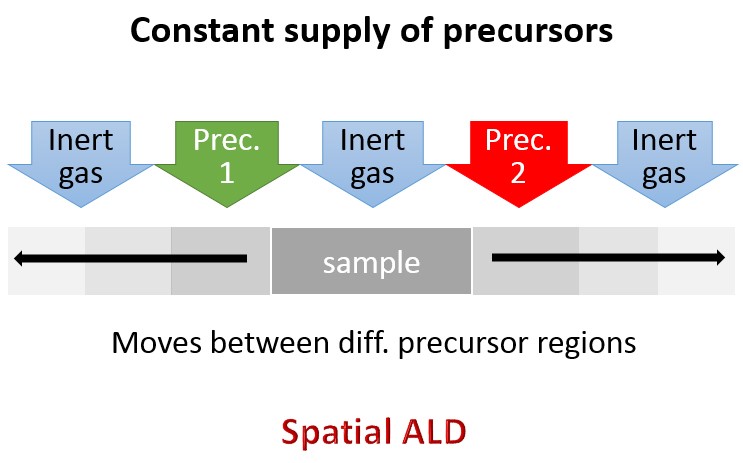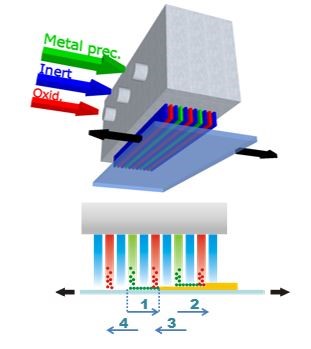PhD thesis offer at LMGP Grenoble
A new PhD position under the supervision of Dr. Mónica Burriel and Dr. David Jauffres in the framework of the HarveStore project is available at LMGP/SIMAP (Grenoble, France): “Optimization of high performance nano-architectured electrode/electrolyte bilayers for reversible Solid Oxide Cells”. More info: download.
HarveStore at E-MRS Spring 2021 meeting
The project is sponsor of symposium G: “Solid state ionics: advanced concepts and devices”. Two special sessions “Interface and surface phenomena” and “In situ/Operando Characterization” will be dedicated to the project.
Webinar on battery technologies and patents
On April 15th, the project will host the presentation of the EPO-IEA study “Innovation in batteries and electricity storage – a global analysis based on patent data”, followed by round table. The study is a global analysis of energy storage technologies based on the patents filed in the last 20 years and highlights the trends in terms of applications, materials, forthcoming technologies. We will host one of the authors and we will discuss the directions of the innovation in the field with main actors of battery research and technology.
Confirmed list of speakers: Dr. Z. Georgiou (EPO director), Dr. A. Aguadero (Imperial College), Dr. G. Gregori (EPO Patent examiner), Prof. A. Tarancón (IREC), Dr. P. Vereecken (IMEC), Dr. C. Villevieille (CNRS). Click here for the final program.
Power of Interfaces workshop
Registration is open for the 2021 project workshop!
The JSPS core to core network SOIFIT (Solid Oxide Interfaces for Faster ion Transport) and the EU project HARVESTORE invite you to join an online workshop on April 21st, 2021.
These two international consortia are concerned with the common goal of gaining a deeper understanding of materials and their interfaces for ionic devices. Last year we held a very successful joint meeting “The Power of Interfaces” at the Royal Society in London, where we managed to host almost 70 participants. This year, we have decided to hold a virtual workshop, which will consist of four sessions covering new materials, nanoionics, interface techniques, iontronics. To start each session we have an invited speaker, followed by contributed talks.
Poster of the event and registration: here.
List of confirmed invited speakers:
• Dr. Marine Reynaud (CIC Energigune): “Design of new materials for Li-ion and Na-ion batteries”
• Prof. Atonino Martorana (University of Palermo): “Electrode-electrolyte interfaces in protonic ceramic fuel cells: materials and perspectives”
• Prof. Tatsumi Ishihara (Kyushu University): “Strain effects on electronic band structure of SrTiO3 and photocatalytic water splitting activity”
• Dr. Francesco Chiabrera (IREC-DTU): “In situ spectroscopy ellipsometry for studying the defect chemistry of oxide thin films”.
Join us for a full day on the Power of Interface!
April-May webinars
A series of events have been organized by the consortium.
- April 21st Power of Interfaces workshop, co-organized together with JSPS core to core network SOIFIT (Solid Oxide Interfaces for Faster ion Transport). Following last year’s joint meeting “The Power of Interfaces” at the Royal Society in London, where we managed to host almost 70 participants, this year the workshop will take place virtually. It will consist of four sessions covering new materials, nanoionics, interface techniques, iontronics. Registration link: here.
- April 15th EPO webinar. The European Patent Office has recently released a global analysis related to energy storage technologies (especially batteries) based on the patents filed in the last 20 years, highlighting the trends in terms of applications, materials, forthcoming technologies: link to the study here. We will host Dr. Giuliano Gregori, one of the authors of the study, together with the director of EPO, for a presentation of the work followed by a round table of discussion which will involve group leaders from different European research groups in the battery field. Registration link: here.
Researchers’ Night 2020
Project partners participated in the online European Researchers’ Night 2020, organized in Barcelona. Here is the link to the video presentation (in Spanish).
Webinar “Hidrógeno. Vector energético de una economía descarbonizada” (spanish)
Our project coordinator Albert Tarancón has been hosted by Fundación Naturgy for a webinar on status and future of hydrogen technology. The book “Hidrógeno. Vector energético de una economía descarbonizada”, realized by IREC – Institut de Recerca en Energia de Catalunya has been presented. Here is the link to the video of the event. and for book download.
“Harnessing heat and light to sustainably power the Internet of Things”
A new article has been published by our partners FETFX on the project activities.
PhD position at LMGP/LEPMI Grenoble
Interested in being part of Harvestore? The Materials and Physical Engineering Laboratory (LMGP) and the Laboratory of Electrochemistry and Physical-Chemistry of Materials and Interfaces (LEPMI) in Grenoble offer a PhD project on design and characterization of advances energy materials for micro-cell applications. Check this out!
Atmospheric pressure Spatial Atomic Layer Deposition (AP-SALD)
AP-SALD is a rather recent alternative approach to ALD that is faster (up to two orders of magnitude) and less expensive (since it can be easily implemented at atmospheric pressure) than ALD. This opens new fields of industrial applications for flexible and large substrates (OLEDs, flat displays, photovoltaic cells, etc).
In SALD, the precursors are dosed continuously in different locations (separation of precursors in space), thus eliminating the need for the purge steps of conventional ALD (where precursors are separated in time, Figure 1). This results in much faster deposition rates than conventional ALD (up to two orders of magnitude, reaching nm/s). In addition, SALD offers plenty of flexibility in terms of design and is fully compatible with high throughput processing methods such as roll-to-roll. Finally, because it can be implemented easily at atmospheric pressure, it can be readily scalable as well. As a result, SALD is receiving increasing interest and attention over the last years since it has the potential to become a widespread laboratory and industrial deposition method for multiple applications including electronics, optoelectronics, textiles, paper, etc.
![[legende-image]1383921695955[/legende-image]](https://harvestore.eu/wp-content/uploads/2020/03/tald-pic.jpg)

The Materials and Physical Engineering laboratory in Grenoble (LMGP, a mixed unit between the CNRS and Grenoble INP), partner of Harvestore, if one of the few groups to develop SALD around the world. The approach used is based on a gas injection manifold where the precursor and inert gas are distributed along parallel channels, the close proximity of the substrate ensuring and efficient separation of the precursors, as shown schematically in Figure 2.

The LMGP designs and develops its own systems, and currently has a first prototype that has been working since 2015, while a second one is currently being implemented for large area deposition (tens of cm2). The materials already available are ZnO, Al2O3, Al:ZnO, TiO2, MnO, Cu2O, and SiOx.
The SALD team is currently developing new materials to be applied to the deposition of components for micro harvestorers, and to demonstrate large-area, high –throughput fabrication of such devices.
More information on the research related to SALD in the LMGP can be found in the following links and references below:
http://www.lmgp.grenoble-inp.fr/en/research/spatial-ald
http://www.lmgp.grenoble-inp.fr/en/research/spatial-atomic-layer-deposition
Refs:
- Muñoz-Rojas D, Maindron T, Esteve A, Piallat F, Kools JCS, Decams J. Speeding up the unique assets of atomic layer deposition. Mater Today Chem. 2019;12:96–120.
- Muñoz-Rojas D, Viet Huong Nguyen, Masse de la Huerta C, Jiménez C, Bellet D. Spatial Atomic Layer Deposition. In: Chemical Vapor Deposition for Nanotechnology. Intech open; 2019. OPEN ACCESS : https://www.intechopen.com/books/chemical-vapor-deposition-for-nanotechnology/spatial-atomic-layer-deposition
- Muñoz-Rojas D, MacManus-Driscoll J. Spatial atmospheric atomic layer deposition: a new laboratory and industrial tool for low-cost photovoltaics. Mater Horizons [Internet]. 2014; 1: 314–20.
Article by David Muñoz-Rojas.
